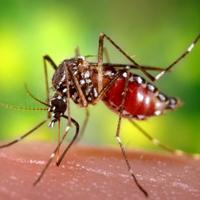Trinidad and Tobago has recorded three laboratory-confirmed deaths from dengue and 303 laboratory-confirmed cases of dengue.
The latest fatality is said to be a 16-year-old boy from Siparia.
Dengue fever is spread by the bite of an infected Aedes aegypti mosquito.
The Ministry of Health issued a media release yesterday publishing the figures and providing an epidemiological update.
The first two deaths recorded are a 65-year-old man from Barrackpore district and a teenager from Faizabad.
Following the deaths in the southern regions of the country, Penal/Debe Regional Corporation (PDRC) Chairman Gautam Maharaj and residents of these areas have called on the Ministry of Health’s Insect Vector Control Department (IVCD) to help in the fight against dengue fever by participating in regular spraying exercises.
Responding to calls for increased spraying of insecticides to control mosquitoes, Health Minister Terence Deyalsingh said at a press conference last Friday that routine spraying to combat dengue was not practical because mosquitoes would eventually develop resistance to the pesticides.
He also said spraying was only done in areas where dengue cases were confirmed.
According to the ministry, dengue symptoms appear within five to six days of being bitten, last for one to two weeks, and include fever, headache (sometimes severe), pain behind the eyes, muscle and joint pain, skin rash, nausea, vomiting and diarrhea.
The ministry also urged people exhibiting signs and symptoms of dengue fever to seek immediate treatment at their family doctor or the nearest medical facility.
The ministry also provided some source reduction tips that will lead to a reduction in the incidence of mosquito-borne diseases, mainly through the elimination of Aedes aegypti mosquito breeding sites.
Citizens are urged to:
* Get rid of all unnecessary items, abandoned vehicles and appliances in and around your yard that could collect water and become a breeding ground for mosquitoes.
* Cover water containers such as tanks, barrels, drums and buckets with mosquito-proof covers.
* Cut back and remove all bushes and undergrowth that may provide mosquito shelter.
*Clear drains and gutters to allow water to flow freely.
* Use mosquito nets and insect repellent as personal protection measures, if necessary.


